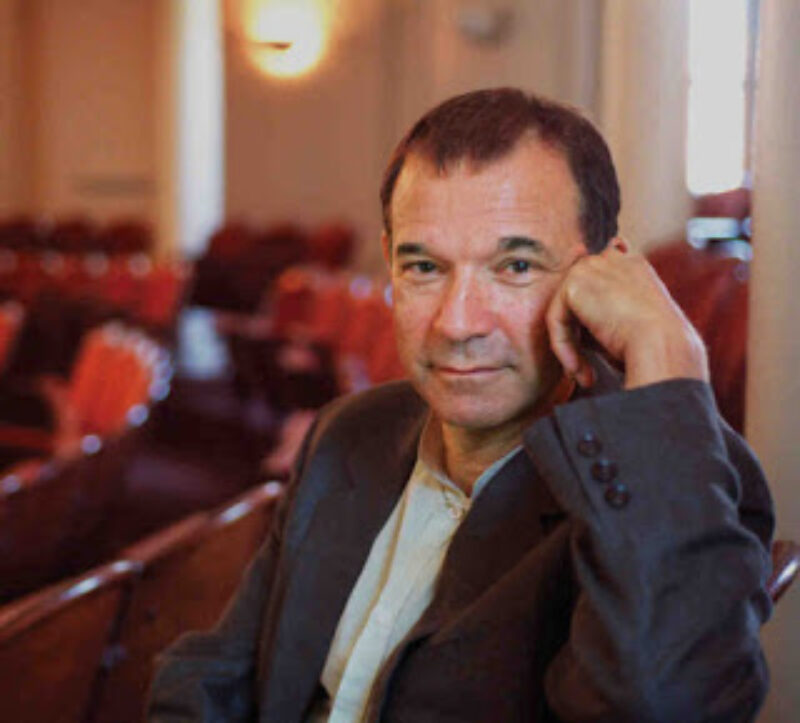Survival of the Unfittest

Stephen Greenblatt walked onto the stage of Benaroya Hall with the air of a man who is accustomed to being in the spotlight. Fairly short with a dark suit, a slightly receding hairline, and a penchant for puns and jokes, he seemed more like your friend’s father than a Harvard professor, New York Times bestselling author, and winner of both the 2011 National Book Award and the 2012 Pulitzer Prize for Nonfiction. Greenblatt poked at the projector remote.
“Is this thing working?” he asked, fiddling with it for a second, before, "ahh!" The projector flipped its slide, revealing the name of his lecture: The Survival of Dangerous Ideas: Lucretius, The Renaissance, and the Modern World. Then, without even pausing to formally begin his lecture, Greenblatt jumped into his introduction , which followed the history and culture of militant Christian orthodoxy. Yet the historical portrait that Greenblatt painted for the multitudes of people who came to hear him speak at Benaroya Hall was fascinating and amazing because it was deeper than just dates and namedropping. Not only can I safely say that I exited the auditorium feeling smarter and more educated about the world around me, but I can also say that I genuinely enjoyed the lecture.
The central thesis of Greenblatt’s lecture centered on a question: how do ideas, art, and literature considered unfit during their own historical time periods manage to survive through the ages? The primary example he used was the lengthy epic written by the Roman philosopher Lucretius, titled On the Nature of Things. When Lucretius’ epic was discovered in 1417, it was a time of extreme Christian orthodoxy. In the time it was discovered, burning "heretics" (a word which, as I learned from Greenblatt, is derived from "heresies," the Greek word for "choice") was a normal part of any weekend. Yet somehow this poem, which claimed things like "the Universe has no creator or designer," "the world was not created for or about humans," and "the soul dies," managed to work its way through the mesh of that era’s orthodox Christian government and culture.
How? Greenblatt claims that it was a mix of an academic’s love of prolonging the existence of a dead thing in what Greenblatt called "artificial homeostasis," refusal or fear to truly discuss the poem’s content, and something akin to cultural "xenografting," the process in which ideas are sustained through literature, art, and people just not shutting up about it.
I have been a guest to many lectures from many teachers over the years, yet few have managed to maintain the amiable and approachable personality of Greenblatt, while still teaching their audience.
However, despite my overall excellent first experience at Seattle Arts & Lectures at Benaryoa, Greenblatt’s lecture was far from perfect. Though the strength of it lay in his speculation of philosophical and historical ideas, the introduction of his lecture was not as interesting as the content, and dragged on too long. Had the rest of his lecture mirrored its first fifteen minutes, I would have had a very different opinion of Greenblatt and his lecturing.
I walked into Benaroya expecting Greenblatt to spend most of the time talking about his award-winning book, The Swerve: How the World Became Modern. But by the time I left the auditorium, clutching four pages of notes and a sense of awe, I felt a new sense of respect for him, Lucretius, and the innate, sustaining quality of poetry as a whole.
Next up in Seattle Arts & Lectures Literary/Arts Series:
Karen Russell, author of Swamplandia!
Wednesday, April 3 @ 7:30
Benaroya Hall
More info: lectures.org
REMEMBER: Seattle Arts & Lectures events are ALWAYS FREE for TeenTix members, and you can always bring a guest for $5!


